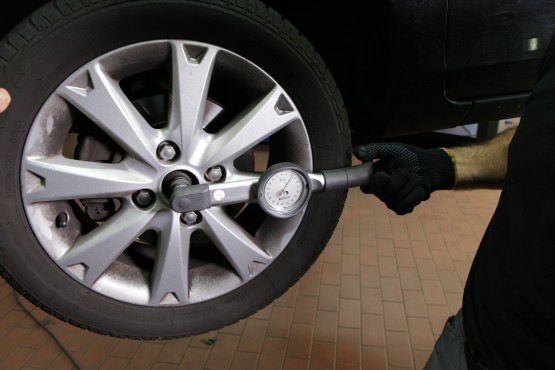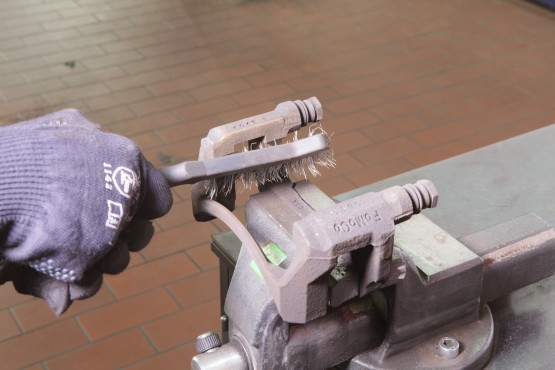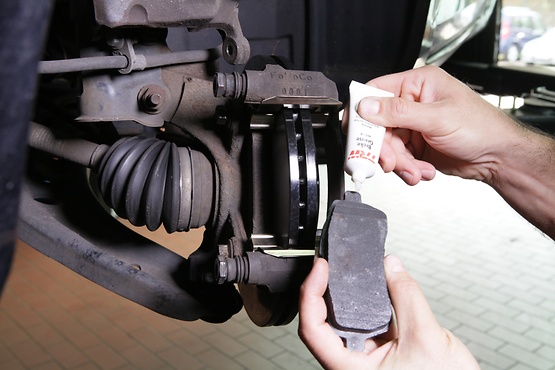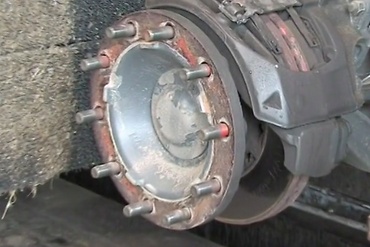Most workshops know this problem: a customer arrives with his vehicle and complains about unpleasant squealing noises in the brake system. This how-to guide addresses this issue and tries to find the cause by measuring the residual slip torque of the front axle brake system.
Noise emission
If the brake system generates noises without actuation of the brake pedal, the reason could be that the brake pad is not releasing far enough from the brake disc. This results in permanent contact between friction lining and brake disc. The friction generates vibrations which are perceived as unpleasant squealing, usually with a high frequency. There are various causes which can lead to these noises. This means that a systematic approach is essential for troubleshooting.
Diagnosis
If you notice any noises during the test drive, then lightly tap on the brake pedal when the traffic situation allows. If the squealing is gone, this is an indication that the noises stem from the brake system. Back at the workshop, put the vehicle on the brake test stand to identify where the noise originates from. Brake squealing often already occurs at low wheel speeds, so that the speed of the roller brake tester is sufficient to generate the squealing.
How-to-guide

Move the car onto the lifting platform and lift it up. Now rotate all wheels, one after the other. Do the wheels spin freely or are any of them difficult to rotate?
The residual slip torque has to be measured on the wheels which show resistance during rotation. To do this, remove the cover in the rim to access the axle nut below.
Before the measurement, turn the wheel several times slowly and evenly in direction of travel. An indicator torque wrench is ideal for precise verification. This tool shows the torque which is required for turning the wheel on a mechanical scale, on a dial or on an electronic display.

To determine the residual slip torque, position the torque wrench on the axle nut with the correct socket. Turn the wrench slowly and carefully until the wheel starts turning. Compare the measured value to the information from the vehicle manufacturer. The value measured by us was 13 Nm and is therefore above the 10 Nm specified by the vehicle manufacturer.

Tip
If you do not have access to this special tool, you can also use a conventional triggering torque wrench. Set it to the maximum value of the specified residual slip torque and turn the nut carefully. If the torque wrench triggers (audible or noticeable click) before the wheel turns, the torque is too high.

If the residual slip torque is too high, uninstall the brake pads and clean all contact surfaces of the brake pads on the brake carrier and on the brake calliper with a wire brush and brake cleaner. Depending on the brake system, check the guide pins on the carrier, the pistons of the brake calliper for corrosion and easy operation as well as all dust covers for their perfect condition.

If this is specified by the vehicle manufacturer, apply a suitable grease (e.g. TRW – PFG110) thinly to the contact surfaces between pad and holder, or, if fitted, between pad and pad retaining springs.
Note: Do not apply grease to rubber-coated retaining springs, as this would affect the noise damping properties of the rubber coating!

Install the brake pads again and check the residual slip torque again.
Take the vehicle for a test drive.
ZF Aftermarket product range
Discover the complete portfolio of brakes in our product catalog.


